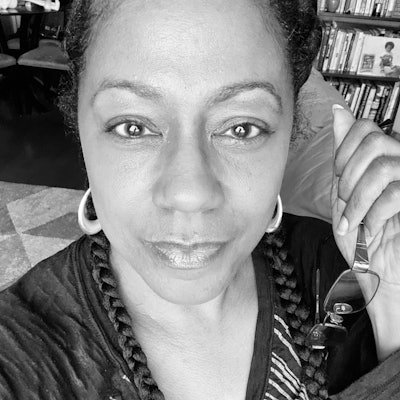In 2016, the United States Department of Education published a report on the State of Racial Diversity in the Educator Workforce. This report highlighted a critical need to diversify teacher education. With over 50% of the students in public education being students of color, teachers of color are clearly underrepresented at around 18% (2016, US Dept. of Ed.). While the overall numbers of teachers of color have risen slightly over the years, the numbers for Black teachers have dropped. This has major implications because there are clear benefits to all students when they have teachers of color and stronger benefits when Black students have Black teachers (2016, US Dept. of Ed.). Also, Black teachers tend to migrate to public school systems in urban high-needs areas, and they tend to stay in those schools longer. If those of us charged with improving the quality of public education are serious, we must be intentional about recruiting and retaining teachers of color.  Dr. Katherine E. L. Norris
Dr. Katherine E. L. Norris
Answering the Call
Over the last few years, Educator Preparation Programs (EPP) have been responding to the call creating programming and applying for funding to increase the number of students of color in their teacher education programs by creating Grow Your Own and Pipeline Programs across the country. Even I am currently responding to a grant call for the Teacher Education Program at Howard University. As I sit down to work on designing a Grow Your Own Program, I must stop to ask the questions, after we recruit, then what? What is the state of the teaching profession for which I am recruiting?
The Reverend Dr. Martin Luther King Jr. wondered if as he was fighting to lead his people out of segregation if he was in fact integrating them into a burning house. As I watch this new wave of heavy recruitment around Black teachers and teachers of color into the teaching field, while teachers are leaving the profession in droves, that same sentiment often comes over me. I don’t want us to be leading students into a burning house.
The State of the Teaching Profession
It is hard to ignore the current condition of the teaching profession. Teachers have been leaving the field in record numbers while less students are opting to select teacher education as their major. The 2020 pandemic served to highlight challenges faced by teachers across the country while also creating new education challenges both in the classroom and in the home. The pandemic also served to shine a light on inequities that children in high-needs schools face as they move through our educational systems. Disproportionally impacted were Black and Brown students and students from low-income households. As the pandemic took a hit on the education system, school districts began dealing with a migration away from the teacher profession, leaving schools struggling to ensure that each classroom has a qualified teacher to lead it. Understaffed schools and classrooms are impacting the quality of education and largely impact students of color.
As Teacher Education Programs begin to heavily recruit candidates to diversify the teacher education pipeline, there needs to be conversations and infrastructure created around supporting these new teachers as they enter the field of education. There is much talk about the recruitment process and how to support students from matriculation through graduation, but what are we doing to ensure that teachers are going to be supported as newly appointed teachers – especially those teachers that are in our high-needs schools? What work is being done to strengthen the beloved profession and the working conditions for faculty and staff?
It is essential that as we recruit teacher education majors into a profession that we love, that we ensure that we are supporting them completely.
Beyond Recruitment
More than just creating an exciting program that brings publicity to teacher education programs, or checks off a box for diversity programming, we need to center the needs of the students of color both as teacher candidates and as they enter the profession. It is critical that we are properly preparing them for a career in teaching that is fulfilling and sustainable. EPP’s must ask themselves, how are our programs carrying out culturally responsive practices in the recruitment process and in our classrooms.
As EPP’s begin these diverse teacher education recruitment pipelines, the job is not done once students reach graduation and certification. There is a need to follow the students through their first few years of teaching. Simultaneously, work needs to be done at the district level to offer support and create policies that ensure that our profession is being respected and protected. How do we begin to ensure that newly recruited teachers are entering public schools that are properly staffed? How do we ensure that new teachers are being mentored and receiving professional development opportunities in their first years of teaching? Can teacher education programs work together to push the narrative for increasing teacher pay and lowering class size in some of our high-needs districts?
Yes. The recruitment of a diverse teacher workforce is critical, but the work must not stop there. Strong teacher educator programs will consciously and intentionally support newly certified teachers as they enter the field of teaching, and simultaneously work to change the narrative and policies around the teaching profession to ensure that we keep the spotlight on the need for increased teacher pay, smaller class size and better support and working conditions in an effort to retain our best and our brightest in the teaching profession.
Dr. Katherine E. L. Norris serves as Chair for the Department of Curriculum and Instruction at Howard University. Her research has focused on diversity and equity in education, culturally responsive home-school partnerships, using picture books to teach social justice and diversifying the teacher education pipeline.
References Cited
U.S. Department of Education, Office of Planning, Evaluation and Policy Development, Policy and Program Studies Service, The State of Racial Diversity in the Educator Workforce, Washington, D.C. 2016.





















